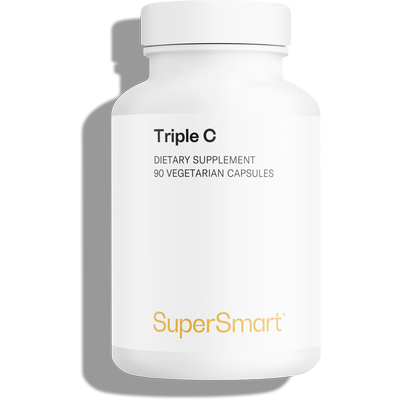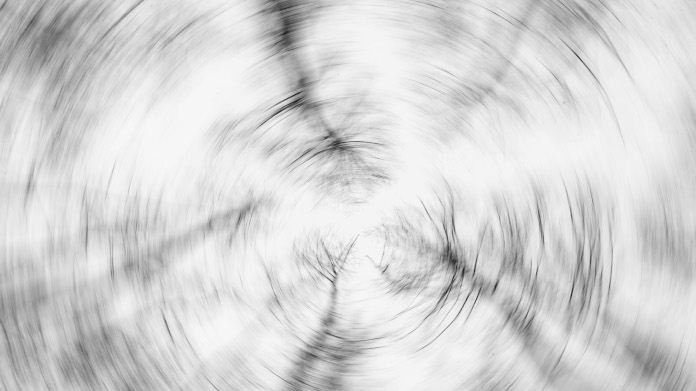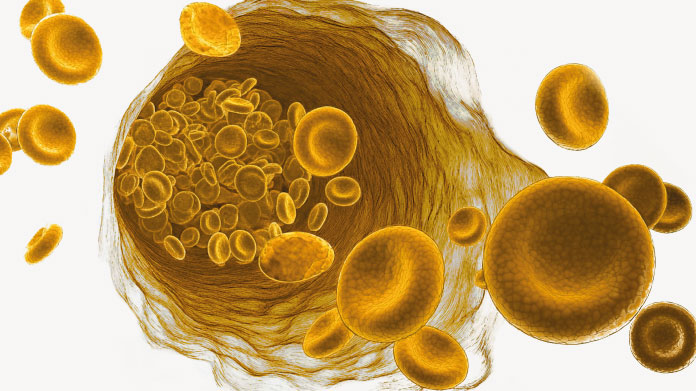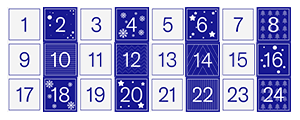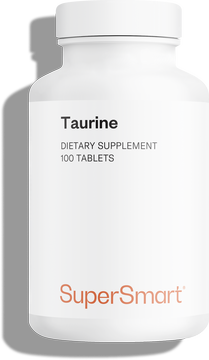
What is iron used for and what are the risks associated with a deficiency?
Definition and benefits of iron
Iron is a mineral and trace element essential for many vital functions in the body:
- it participates in the formation of haemoglobin in red blood cells, which ensures the transport of oxygen to the organs;
- it contributes to the normal functioning of the immune system, in particular by helping the development and activity of lymphocytes;
- it is a well-known anti-fatigue nutrient (due to its role in oxygenating the body), etc.
What are the risks associated with a lack of iron?
Some common health risks associated with iron deficiency include:
- iron deficiency anaemia;
- heart failure; and
- an increased risk of complications in the event of pregnancy (premature birth, etc.).
Lack of iron is a widespread problem: it is estimated that 50 to 80% of the world's population is affected, with a large proportion being women of childbearing age (particularly due to the loss of blood, and therefore iron, during menstruation).
List of the 7 fruits richest in iron
The 7 fruits that contain the highest raw amount of iron
Are you looking to increase your iron intake throughout the day by eating fruit?
To start off simply, here is an initial list of the 7 fruits richest in iron, ranked from highest to lowest iron content:
- dried apricots (6.3 mg iron per 100 g);
- dried coconut (3.6 mg iron per 100 g);
- dried figs (2.9 mg iron per 100 g);
- raisins (2.6 mg iron per 100 g);
- dried peaches (2.3 mg iron per 100 g);
- dried goji berries (2.1 mg iron per 100 g); and
- prunes (0.9 mg iron per 100 g).
To better assimilate this non-haem iron (of plant origin), consume sources of vitamin C at the same time: mangoes, pineapples, lychees, cherries, vitamin C food supplements (such as Triple C), etc.
Vitamin C reduces non-haem iron into a ferrous form (Fe2+) that is more easily absorbed by intestinal cells (1).
Seven fruits that combine high iron content AND iron bioavailability
You may be wondering which fruits are both the richest in iron and the most easily absorbed without the need for another food; here is a list of 7 food sources, ranked in descending order of iron content and bioavailability:
- dried goji berries (2.1 mg iron per 100 g), rich in iron, vitamin C and carotenoids, which protect iron from oxidation;
- prunes (0.9 mg iron per 100 g), rich in iron and organic acids (such as malic acid) which help to solubilise iron in the intestine;
- passion fruit (1.6 mg iron per 100 g), rich in iron, vitamin C and organic acids (such as citric acid), which are excellent for iron solubility;
- raspberries (0.7 mg iron per 100 g), rich in iron, vitamin C and organic acids (such as ellagic acid), which help to maintain iron in a bioavailable form;
- blackberries (1.9 mg iron per 100 g), rich in iron and vitamin C;
- blackcurrants (1.0 mg iron per 100 g), rich in iron and especially vitamin C; and
- strawberries (0.4 mg iron per 100 g) contain iron and a large amount of vitamin C.
Note that dried fruit features prominently in the lists of fruits cited because the drying process concentrates nutrients, including iron, by reducing the water content of the fruit.
Some additional tips for combating iron deficiency
What is the ideal iron intake?
Our body loses between 1 and 1.5 mg of iron every day (2), through sweat, stools and flaking skin, with women of childbearing age losing up to 5 mg per day.
As we have difficulty properly assimilating iron, we need to ensure that our intake is much higher than the quantities lost: around 8 to 18 mg of iron per day, and even 16 to 36 mg of iron from plant sources, as the latter is even less easily assimilated by the body than iron of animal origin.
Sources of haem iron
Unless you have a restrictive diet, you should also regularly include sources of haem iron (i.e. of animal origin) in your diet, as it is much more bioavailable than non-haem iron (of plant origin).
Significant amounts are found in red meat, seafood (clams, oysters, etc.) and fish, with portions containing more than 1 mg of iron. Offal (especially black pudding) has up to 5 mg per portion.
Taking an iron supplement
In the event of iron deficiency confirmed by a blood test, take iron supplements under the supervision of a healthcare professional.
Choose the most easily absorbed forms and those that do not cause side effects in the intestine, such as iron bisglycinate. The latter has a bioavailability 4 times higher than conventional iron sulphate supplements (3).
The food supplement Iron Bisglycinate will provide you with 75 mg of iron bisglycinate per day, i.e. 15 mg of iron daily (which represents 107% of the recommended daily intake).
Be careful with iron absorption inhibitors
Finally, avoid combining iron-rich foods with foods and drinks that inhibit iron absorption such as:
- dairy products (4);
- coffee;
- tea (due to tannins);
- cocoa (due to polyphenols); and
- fruits containing a lot of pectin (such as apples and quinces) (5).
SUPERSMART ADVICE
References
- Li N, Zhao G, Wu W, Zhang M, Liu W, Chen Q, Wang X. The Efficacy and Safety of Vitamin C for Iron Supplementation in Adult Patients With Iron Deficiency Anemia: A Randomized Clinical Trial. JAMA Netw Open. 2020 Nov 2;3(11):e2023644. doi: 10.1001/jamanetworkopen.2020.23644. PMID: 33136134; PMCID: PMC7607440.
- Cayot, P., Guzun-Cojocaru, T., Cayot, N., 2013. Chapter 6. Iron fortification of milk and dairy products, dans : Handbook of Food Fortification and Health. Volume 1. From Concepts to Public Heath Applications. New York, NY : Humana Press, Springer. 75‑
- Bovell-Benjamin, A.C., Viteri, F.E., Allen, L.H., 2000. Iron absorption from ferrous bisglycinate and ferrictrisglycinate in whole maize is regulated by iron status. The American Journal of Clinical Nutrition 71 (6), 1563‑1569. DOI 10.1093/ajcn/71.6.1563
- Shawki, A., Mackenzie, B., 2010. Interaction of calcium with the human divalent metal-ion transporter1. Biochemical and Biophysical Research Communications 393 (3), 471‑475. DOI 10.1016/j.bbrc.2010.02.025
- Hadler, M.-C., Colugnati, F., Sigulem, D.M., 2004. Risks of anemia in infants according to dietary iron density and weight gain rate.. Preventive Medicine 39, 713‑783.
2 Days
Delivery is prompt and I never saw a…
Delivery is prompt and I never saw a quality problem with the manufacturing. It is not possible to assess efficacy on a personal basis, since too many factors come into play. Efficacy can only be assessed statistically with a sufficient number of cases.
Roger De Backer
3 Days
I collaborates with the Supersmart…
I collaborates with the Supersmart more than 10 years. Every thing is going good. Quality of the things is good. Delivery comes in time. Five stars definitely !!!
Oleksiy
3 Days
All good
Simple, frictionless site, easy ordering, good delivery updates and execution.
Chris Robbins
5 Days
I feel better
I feel better
Peter Ammann
5 Days
Prompt delivery
Prompt delivery
JAKUB Radisch
7 Days
My new go-to for top quality supplements!
I am buying more and more of my supplements from this superb, high quality company. Cannot recommend it enough. Plus, excellent customer service with a quick, helpful team and speedy deliveries. Highly recommend Supersmart!
Cecilie H.
10 Days
SUPERSMART WHAT ELSE👍
SUPERSMART WHAT ELSE👍
DIEDERLE Christophe
13 Days
Excellent quality products with…
Excellent quality products with innovative formulas, as someone who has been suffering with acid reflux, these supplements have been lifesavers.
Oriana Moniz
13 Days
high quality supplement!
high quality supplement!
GALANT
14 Days
Good service prompt delivery
Good service prompt delivery
Mrs Marcella Reeves
19 Days
I like your clear explanation
I like your clear explanation. And how to make a choice of products for a specific health problem
Ingrid
25 Days
Great product and it arrives quickly.
Great product and it arrives quickly.
SOMMARIVA Gianni
26 Days
Excellent products and fast service.
Excellent products and fast service. What do we need more?
Margarida
30 Days
The variety of products is amazing
The variety of products is amazing, the offers are good and the sending is very fast. I just miss having a bit more of guidance about combinations, possible interactions, etc.
Maria Angeles Verdu
32 Days
It was quick
It was quick.
Timo Antero


